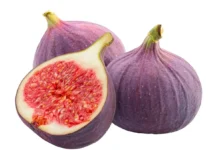Cantaloupe Glycemic Index
Cantaloupe is a popular melon known for its sweet, juicy taste and rich nutrient profile. The glycemic index (GI) of cantaloupe is approximately 65, which classifies it as a medium-GI food. The glycemic index measures how quickly a food raises blood sugar levels on a scale from 0 to 100. Foods with a lower GI are absorbed more slowly, leading to a gradual increase in blood sugar, while higher-GI foods may cause quicker spikes.
For people monitoring their blood sugar levels, knowing the GI of foods like cantaloupe can help guide portion sizes and meal combinations.
Cantaloupe Glycemic Load
While the glycemic index is useful, it doesn’t take into account portion size. This is where glycemic load (GL) comes in. Cantaloupe’s glycemic load per 100 grams is about 4, which is considered low. This low GL suggests that, in moderate portions, cantaloupe has a minimal impact on blood sugar levels, making it a manageable choice for people aiming for stable blood sugar. Eating cantaloupe in balanced amounts can fit into most diets, even those focused on blood sugar control.
Cantaloupe Nutritional Profile (per 100 grams)
Cantaloupe is not only tasty but also packed with essential nutrients. Below is a detailed look at the nutritional content of cantaloupe per 100 grams:
| Nutrient | Amount per 100g | % Daily Value (DV) |
|---|---|---|
| Calories | 34 kcal | – |
| Carbohydrates | 8.2 g | – |
| Sugars | 7.9 g | – |
| Fiber | 0.9 g | 4% |
| Protein | 0.8 g | 1% |
| Fat | 0.2 g | – |
| Vitamin C | 36.7 mg | 41% |
| Vitamin A | 169 μg | 19% |
| Potassium | 267 mg | 6% |
| Folate | 21 μg | 5% |
| Magnesium | 12 mg | 3% |
| Calcium | 9 mg | 1% |
| Water | ~90 g | – |
Cantaloupe is high in Vitamin C and Vitamin A, which support immune function and eye health. It’s also a good source of potassium and folate, essential for heart health and cellular function. With a high water content, cantaloupe is also great for hydration.
Overall, cantaloupe offers a moderate glycemic index with a low glycemic load, making it a refreshing, nutrient-dense option that can fit into balanced, health-focused diets.






